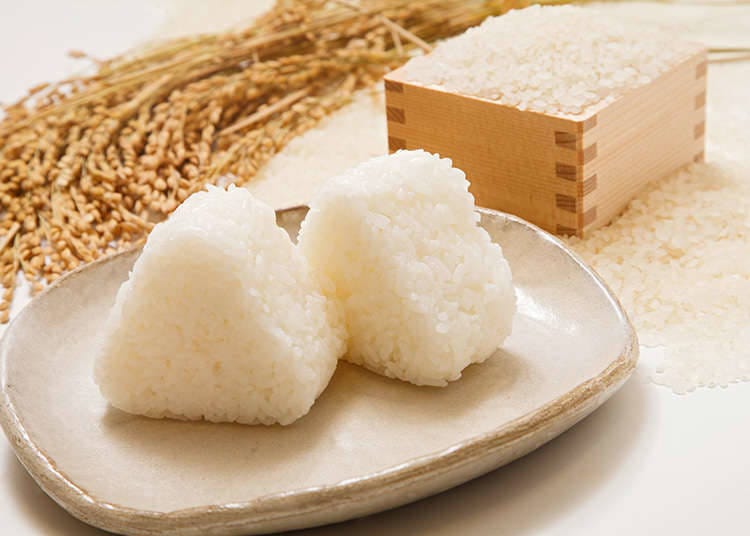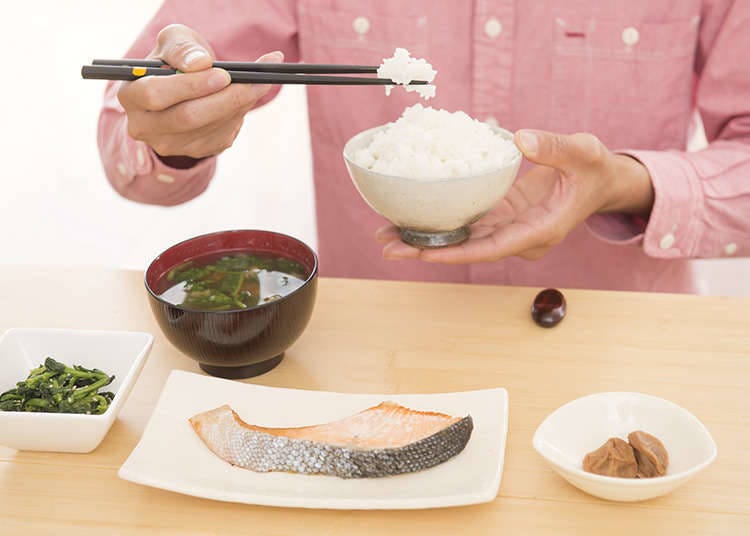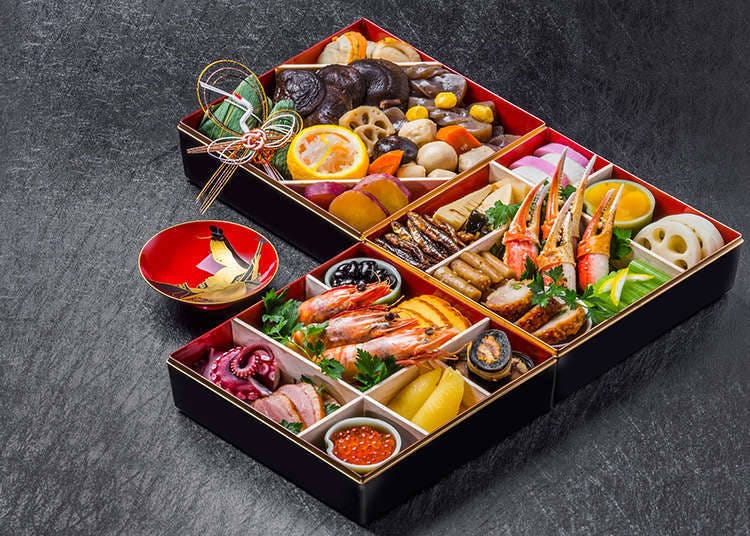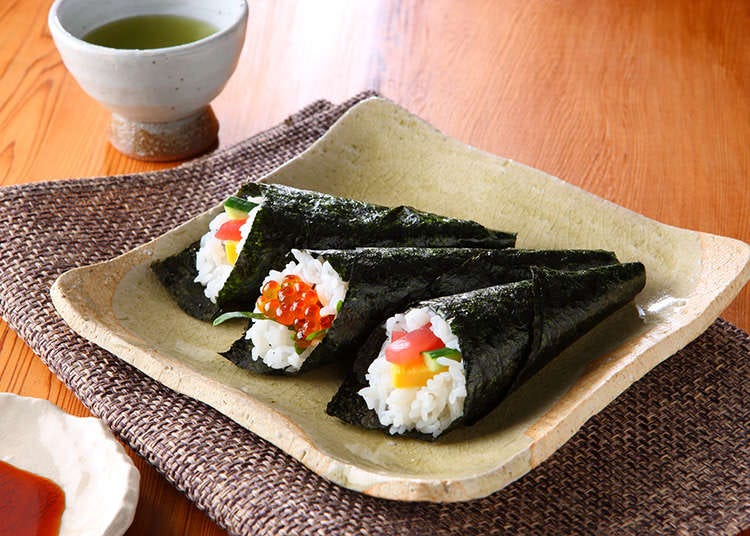The History of Japanese Cuisine

Rice cultivation was already occurring in Japan by the 3rd century B.C., and the people were already finding ways to cook. Through Buddhism, fried food and tea also spread to Japan, and karaage(fried chicken) and fermented items such as natto (fermented soy beans), were being eaten over 1000 years ago. By the Edo period, local food such as the lucky "Edo Cuisine" was developed. The culture of not eating meat changed with the influence of western cultures, and more and more original Japanese dishes were created.
The "One Soup, Three Side Dishes" Custom

The standard form of Japanese cuisine is a menu that incorporates one soup and three side dishes. This menu is comprised of one soup dish, one main dish, and two side dishes. The main dish is a dish with fish, meat, or eggs. The side dishes mainly include those made from vegetables or beans, such as "tofu". With this system, you can eat a variety of food in just one meal.
Seasonal Foods

Japanese people have a knack for matching food with each season. Bamboo shoots and Spanish mackerel are best enjoyed in spring. In Summer, cucumbers and sweetfish are recommended. In fall, persimmons and saury are often eaten, and in winter, Chinese cabbage and amberjack are some of the foods that people look forward to.Japanese cuisine is loved for its dishes that bring out the taste of seasonal ingredients.
Multifaceted Cuisine for Every Season and Event

Seasonal and event-related food are very important in Japanese cuisine. On New Year's Day, people eat special New Year's food such as "osechi" (a special New Year's bento) and "ozoni" (a type of soup only eaten over the New Year). There are many other Japanese dishes that go with particular seasons, events, or holidays. For example, on December 21st, the day of winter solstice, people eat Japanese pumpkins to prevent colds. Also, on special occasions, a celebratory "sekihan," red rice made from glutinous rice and red beans, is prepared and eaten.
*Prices and options mentioned are subject to change.
*Unless stated otherwise, all prices include tax.
Recommended places for you
-

wagyuutokome Nakatake
Other Japanese Food
Ginza
-

Kyoya THE KIYOMIZU Gokomachi
Other Japanese Food
Gion, Kawaramachi, Kiyomizu-dera Temple
-

Jiraiya
Other Japanese Food
Sendai And Matsushima
-

Koube Beef Kappo OMOKI Shinnihonbashi
Other Japanese Food
Tokyo Station
-

Wasui Yaesuten
Other Japanese Food
Tokyo Station
-

GINZABANSUKESHINJUKUTAKASHIMAYATAIMUZUSUKUEA
Other Japanese Food
Shinjuku
-

Where to Stay in Matsumoto: 15 Excellent Accommodations Near the Alps, Castle & Onsens
by: Himanshi Shah
-

Where to Stay in Nagano: Curated Selection of Hotels for Every Travel Budget
by: Himanshi Shah
-

April 13: EXPO 2025 Osaka-Kansai Opens Its Doors to the World's Brightest Minds
-

Road Trip Around Izu Peninsula: Stunning Views, Hidden Gems, and Relaxing Hot Springs
by: Hide
-
Ad

Enjoy Country Farm Tokyo German Village: Flower Fields, Food, and Family Fun in Chiba Prefecture
-

Spring Flowers and Colorful Events Around Tokyo in 2025 – Perfect for Your April and May Itinerary
-

Tokyo Train Map: Your Essential Guide to Subways and Railways
-

Complete Guide to Niigata Airport (KIJ): Dining, Souvenirs, Massages, and More!
-

Meiji Shrine (Meiji Jingu): Exploring the Sacred Sanctuary of Peace in Bustling Tokyo
-

Treat Yourself! Cheeky Japanese Delights From Hokkaido
by: Steve Csorgo
-

3 Tasty Donburi Dishes in Tokyo: Recommendations from a Japanese Food Expert
by: Miyu Shimada
-

We Ordered Food at This Susukino Restaurant in Sapporo, But We Weren't Expecting What Happened Next!
- #best sushi japan
- #what to do in odaiba
- #what to bring to japan
- #new years in tokyo
- #best ramen japan
- #what to buy in ameyoko
- #japanese nail trends
- #things to do japan
- #onsen tattoo friendly tokyo
- #daiso
- #best coffee japan
- #best japanese soft drinks
- #best yakiniku japan
- #japanese fashion culture
- #japanese convenience store snacks















